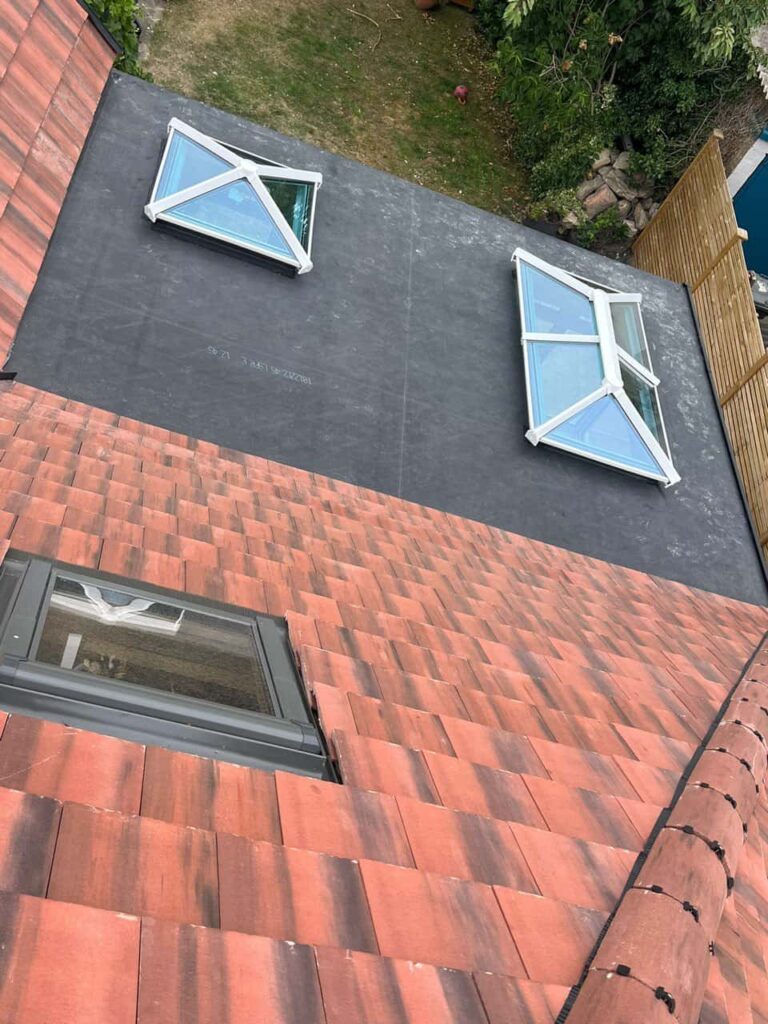A sudden roof leak after heavy rain can catch any homeowner by surprise. One day your roof seems perfectly fine, and the next, you’re dealing with water stains, damp patches, or drips inside your property. Understanding why this happens is key to preventing future leaks and maintaining your roof’s long-term integrity. At Haywards Heath Roofing Repairs, we help homeowners in Haywards Heath, West Sussex, identify the causes of roof leaks and implement lasting solutions to protect their homes from further damage.
Why Heavy Rain Exposes Roof Weaknesses
A well-built roof is designed to shed water efficiently. However, during a downpour, especially one accompanied by strong winds, any existing weakness can quickly turn into a visible leak. Prolonged rain saturates roof materials, increasing the likelihood of water finding its way through even the smallest gaps. Older or poorly maintained roofs are particularly vulnerable during these conditions.
Common Causes of Sudden Roof Leaks
1. Damaged or Missing Roof Tiles
One of the most frequent causes of roof leaks is broken, cracked, or missing tiles. Over time, weather exposure can weaken tiles, allowing rainwater to seep through to the underlay. During a storm, wind-driven rain can penetrate gaps that normally stay dry. Even a single displaced tile can create a pathway for water to enter.
2. Blocked Gutters and Downpipes
When gutters are blocked by leaves, moss, or debris, rainwater cannot flow away from the roof as intended. Instead, it builds up and overflows, often backing up under the eaves or into the fascia boards. This trapped moisture can quickly find its way inside, especially during prolonged rainfall.
3. Damaged Flashing Around Chimneys and Valleys
Flashing—thin metal sheets installed around roof joints, valleys, and chimneys—acts as a seal against water penetration. Over time, flashing can corrode, crack, or pull away from the roof surface. Once damaged, water can easily seep into the gaps, leading to leaks that are often difficult to trace.
4. Worn Roof Underlay
The underlay beneath the tiles or slates acts as a second layer of protection against moisture. As it ages, it can become brittle or tear, especially around nail holes or high-stress areas. When the underlay fails, even minor surface damage can allow significant amounts of water into the roof structure.
5. Poorly Sealed Roof Valleys
Roof valleys—the areas where two slopes meet—channel large volumes of rainwater. If they are not properly sealed or have become blocked with debris, water can collect and penetrate beneath the covering. Heavy rain increases this pressure, leading to leaks that often appear along interior ceilings near the valley line.
6. Damaged Roof Vents or Skylights
Vents, skylights, and other roof penetrations are common weak points. Their seals can degrade over time due to UV exposure and temperature fluctuations. During intense rain, compromised seals can allow water to leak through around these fittings.
7. Moss and Algae Growth
While moss may seem harmless, it retains moisture and prevents rainwater from draining properly. Over time, this can lead to water pooling on the surface and penetrating through tiny cracks or joints. Heavy rainfall only worsens this effect, forcing moisture deeper into the roofing materials.
How to Identify a Leak After Heavy Rain
Leaks often reveal themselves in subtle ways before becoming serious. Homeowners should check for:
- Damp patches or water stains on ceilings and walls
- A musty smell in loft areas
- Peeling paint or bubbling plaster
- Dripping sounds during or after rainfall
- Daylight visible through the loft space (a sign of gaps or cracks)
If any of these signs are present, it’s best to have your roof inspected by a qualified roofer before the damage spreads further.
Preventing Future Roof Leaks
Prevention is far easier—and more cost-effective—than dealing with recurring leaks. Here are a few key measures to protect your roof from water damage:
- Keep gutters, valleys, and downpipes clean and clear of debris.
- Inspect the roof periodically for cracked tiles or signs of wear.
- Check flashing around chimneys and skylights for corrosion or lifting.
- Remove moss and algae growth before it causes water retention.
- Schedule a professional roof inspection annually, especially after extreme weather.
Routine maintenance helps extend the life of your roof and ensures small issues are addressed before they lead to more serious damage.
When to Call in the Professionals
While it may be tempting to locate and patch a roof leak yourself, water ingress can be deceptive. The visible leak inside your home may be far from the actual entry point. Professional roofers use specialised methods to trace and repair leaks effectively, ensuring the problem doesn’t return with the next heavy rain.
At Haywards Heath Roofing Repairs, our experienced team provides thorough inspections and expert repairs for homes across Haywards Heath, West Sussex. Whether it’s a missing tile, damaged flashing, or a compromised underlay, we make sure your roof is secure, weatherproof, and ready to handle whatever the British weather brings.
Conclusion
Sudden roof leaks after heavy rain often stem from existing weaknesses that only reveal themselves under stress. By understanding the common causes and addressing issues early, you can protect your home from extensive damage. For reliable roof inspections and repairs in Haywards Heath, West Sussex, homeowners trust Haywards Heath Roofing Repairs to deliver professional solutions that keep their roofs watertight all year round.
Call us on: 01444 718 199
Click here to find out more about Haywards Heath Roofing Repairs
Click here to complete our contact form and see how we can help with your roofing needs.

